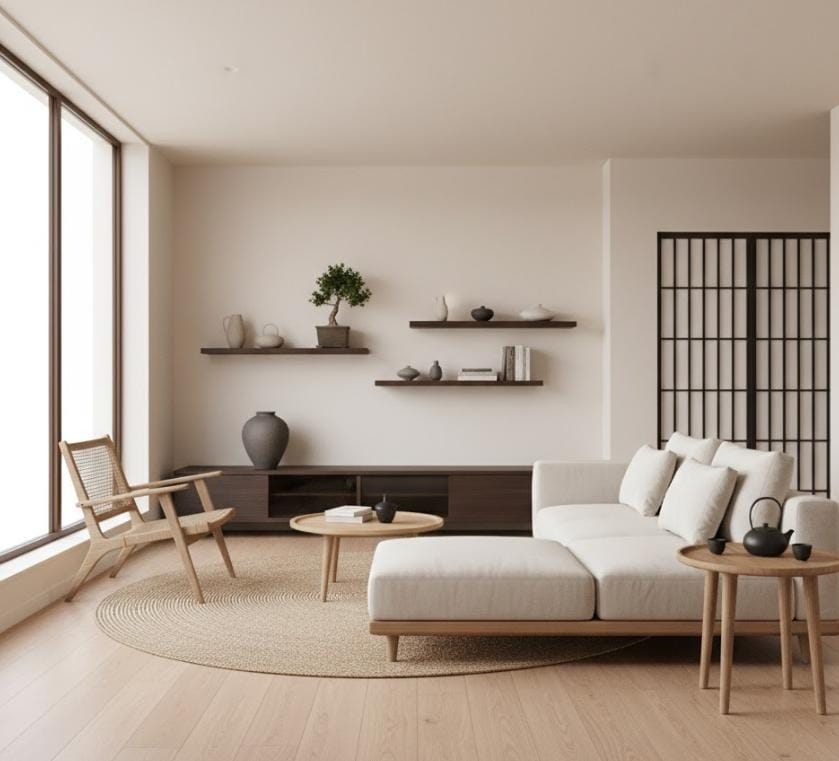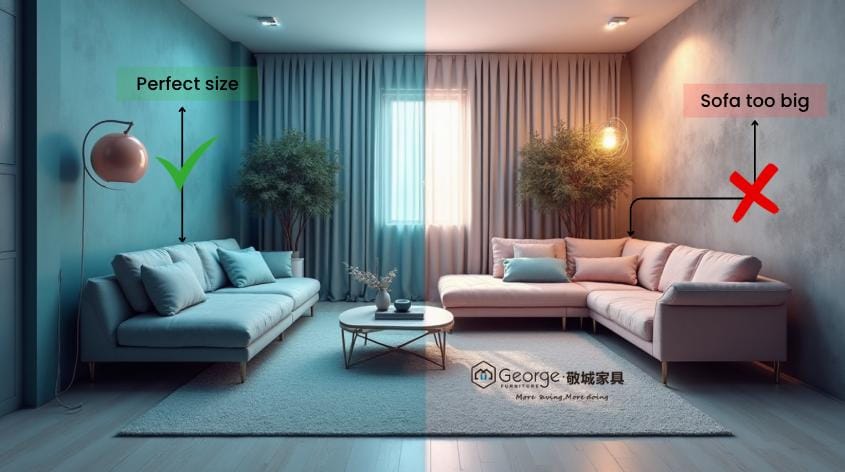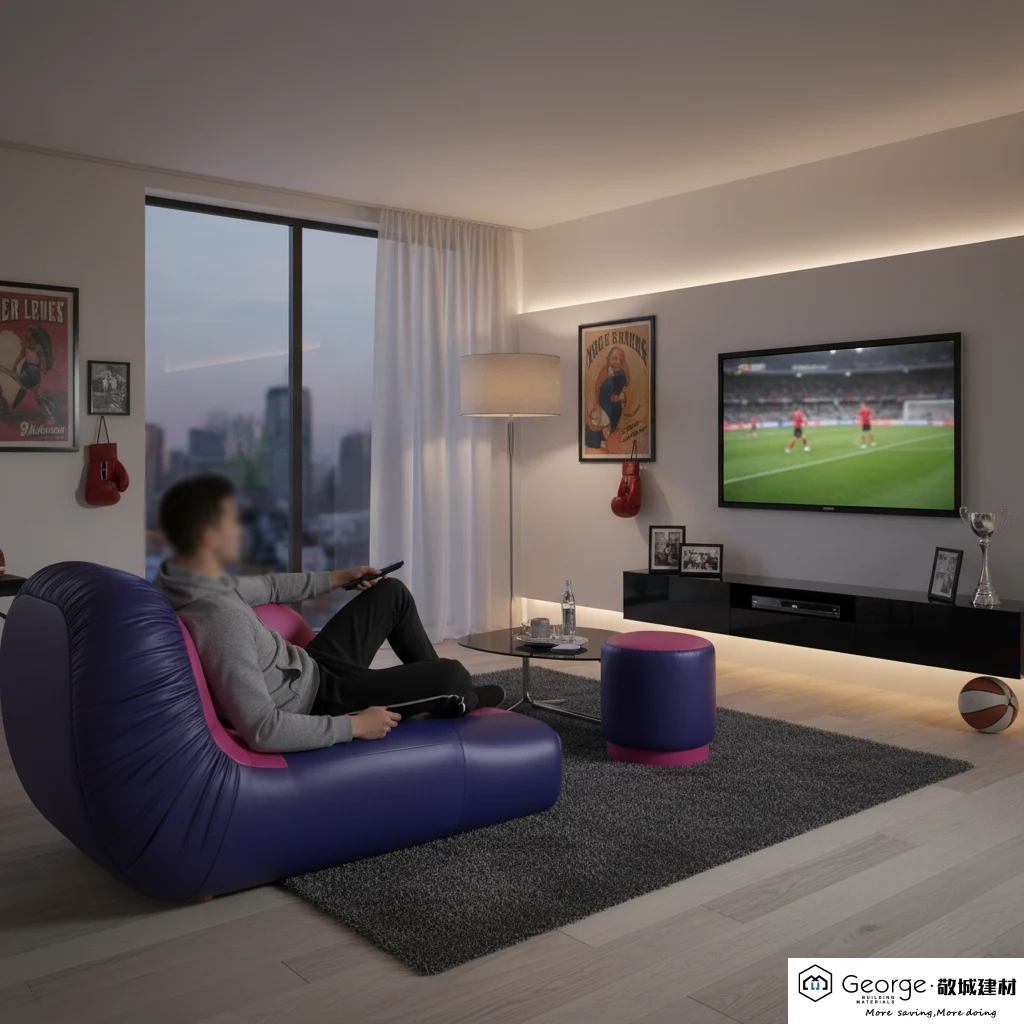
Table of Contents
Choosing the right sofa isn’t just about color or fabric — it’s about finding the perfect fit for your room. Knowing the standard sofa dimensions can help you avoid costly mistakes and make your living space feel balanced and comfortable.
This guide breaks down the typical sofa dimensions, including the average couch size, standard couch length, and sectional layouts, so you can pick the ideal piece for your home with confidence.
Chapter 1. Sofa Anatomy: Definitions and Standard Measurements
Before asking “How big is a standard sofa?”, it’s helpful to understand the key dimensions that define most couches on the market.
1.1. The Three Key Measurements
Each measurement is expressed in feet (ft) and inches (in), referring to the outermost points of the sofa.
Length (Width): The distance from armrest to armrest. This tells you how many people can sit comfortably and how much space the sofa will take up.
Depth: Measured from the front edge of the cushion to the backrest. It affects both comfort and the room’s traffic flow.
Height: From the floor to the top of the backrest, influencing balance and alignment with other furniture.
1.2. Average Size of a Three-Seater Sofa
The standard 3-seater sofa dimensions usually stay consistent across brands. A typical sofa is around 84 inches (7 feet) long and 38 inches deep. These sizes fit most medium-sized living rooms comfortably.
| Parameter | Typical Range (Feet, Inches, and cm) | Technical Details |
| Standard Length (Width / Arm-to-Arm) | 6 ft 6 in – 8 ft (78″–96″) ≈ 198–244 cm | The most common standard sofa dimensions for a 3-seater sofa. Typically fits three full-size seat cushions. |
| Average Depth | 35″–40″ ≈ 89–102 cm | Deeper sofas feel more relaxed and casual, while shallower depths (under 35″) look neater and more formal. |
| Standard Height | 30″–36″ ≈ 76–91 cm | The standard couch height depends on design — modern low-back sofas stay around 30″, while traditional or high-back styles reach up to 36″. |
Chapter 2. Sofa Types: Specific Measurements for Each Configuration
Different seating styles come with their own dimension standards.

2.1. Standard Dimensions of a 3-Seater Sofa
This is the classic living room centerpiece. The standard couch length typically ranges from 78 to 96 inches (6’6″ to 8′). Sofas under 78 inches are often called condo-sized, while anything over 96 inches falls into the oversized or large sofa category.
2.2. Standard Dimensions of a 2-Seater Sofa (Loveseat)
A 2-seater sofa or loveseat is great for smaller spaces or as a companion piece. The usual length ranges between 52 and 72 inches, with 60 inches being the most common. Narrower models under 58 inches are often better suited for one person lounging comfortably.
2.3. Standard Sectional Sofa Dimensions
Sectional sofas combine multiple modules, so their size depends on the layout.
L-Shaped (2 pieces): Common configurations need at least 9 x 7 feet (108 x 84 inches) of floor space.
Depth: The chaise module is usually deeper, often 60 inches, to allow for full leg extension.
Before buying, always tape out the sofa’s footprint on your floor to check spacing and traffic flow.
Chapter 3. Style and Design: How Shape Affects Size
The typical sofa dimensions are significantly influenced by design choices, particularly the armrest structure and seat depth.
3.1. The Impact of Depth on Comfort
The average sofa depth has a big influence on how a sofa feels.
Shallow seats (under 21 inches) are more formal and space-saving.
Deep seats (over 24 inches) feel cozy and casual but take up more room.
Some deep styles reach up to 45 inches overall depth.
3.2. Armrests and Design Styles
Armrest style can add or reduce total width:
Chesterfield or scroll arm sofas can add 6–12 inches to total length.
Track arm or Tuxedo sofas use slim, straight arms, maximizing seating space.
Mid-Century Modern sofas are usually low, around 30 inches high, for a light, open look.
| Sofa Style | Armrest Effect on Length | Height and Back Design Impact |
| Chesterfield / Scroll Arm | Large, rolled armrests add 6–12 inches to the overall sofa length, creating a grand and traditional look. | Features a high, uniform backrest that gives strong visual presence and classic symmetry. |
| Tuxedo / Track Arm | Straight, slim arms help save space, keeping the total width closer to the internal seating size. | Armrests and backrest are usually the same height, giving a modern, boxy silhouette. |
| Mid-Century Modern | Minimal or no armrests. The sleek design keeps the sofa under 30 inches (2′ 6″) tall, ideal for open spaces. | Lower profile enhances a light, minimalist aesthetic. |
Chapter 4. Placement and Logistics: From Design to Installation
The sofa dimensions must be related to the room layout and logistical challenges.

4.1. Allow for Movement
Once you know your average couch size, make sure there’s room to move around it.
Main walkways need at least 30 inches of clearance.
Secondary paths can work with 24 inches.
4.2. Distance from the Coffee Table
Keep 14–18 inches between the sofa and the coffee table.
Less than 14 inches feels cramped; more than 18 makes it hard to reach. The table should be roughly two-thirds the sofa’s length for visual balance.
4.3. Check Doorways and Hallways
A common mistake? Buying a sofa that won’t fit through the door.
Most doors are 36 inches wide or less, so measure before ordering.
Tip: Ensure the sofa’s smallest side is at least 2 inches narrower than your doorway to guarantee a smooth delivery.
Chapter 5. Common Mistakes to Avoid When Choosing a Sofa
Choosing the right sofa does not only mean finding the ideal size but also avoiding those common mistakes that can compromise the harmony and functionality of the space.

5.1. Going Too Big
It’s tempting to pick a large sofa, but an 8-foot couch can overwhelm a small room. If your space is tight, try a roomy 72-inch 2-seater with armchairs instead.
5.2. Ignoring Depth
A sofa that’s too deep may look inviting but can feel uncomfortable for shorter people. Shallow sofas work better for formal seating areas.
5.3. Overlooking Height
A high-backed sofa can block light or artwork. Ideally, the top of the sofa should sit below the bottom edge of nearby windows or wall art — unless it’s meant to be the room’s main focal point.
Frequently Asked Questions
Q1. How big is a standard sofa?
A typical 3-seater sofa measures between 78 and 96 inches long and about 38 inches deep — perfect for most medium rooms.
Q2. What is the average size of a sofa for a small apartment?
For small spaces, choose a loveseat or compact 2–3 seater sofa between 60 and 78 inches long.
Q3. How much space is needed for an L-shaped sectional sofa?
A sectional sofa usually needs at least 9 x 7 feet of clear space, more if it includes a chaise or corner piece.
Q4. Does George’s Furniture offer custom options?
Yes. George’s Furniture provides tailor-made sofas and other furnishings for homes, offices, hotels, and more.
Conclusion
Understanding standard sofa dimensions — from average width and standard length to sectional layouts — helps you create a room that feels both comfortable and stylish.
By planning ahead, measuring carefully, and avoiding common sizing mistakes, you’ll find the sofa that perfectly fits your space and lifestyle.
And if you want something made just for you, brands like George’s Furniture can craft custom sofas for any style or room size.








